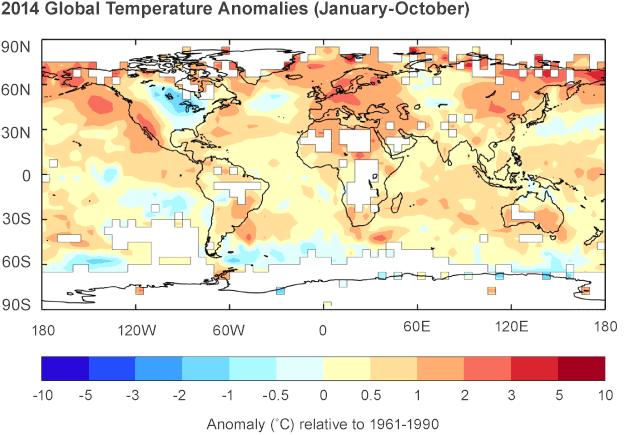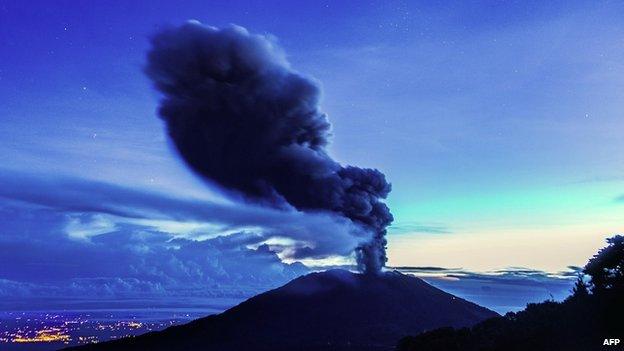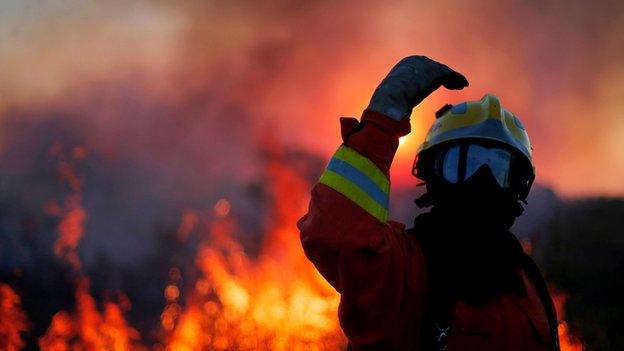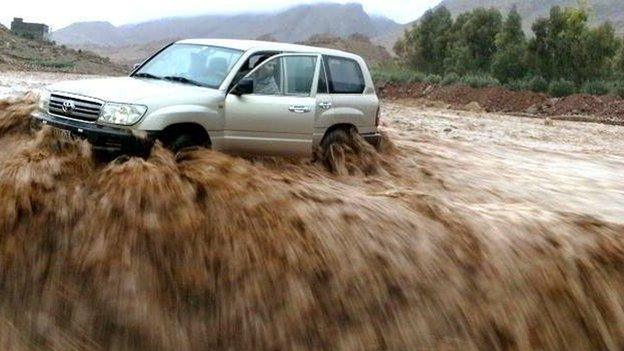What makes different years warmer or colder?
- Published

The latest weather data suggest that the Earth's average temperature is close to breaking the record set in 2010.
Even more striking is the fact that if this occurs, then fourteen out of fifteen of the warmest years on record will have occurred since the turn of the century.
However, while record-breaking warmth is consistent with the general trend of global warming, it's not always the case that each year is warmer than the previous one.
There are temporary ups and downs that ride on top of the overall warming trend.
It's quite possible for a few years to elapse before the next record year, and the warming can speed up or slow down for runs of years, as happened for example in the slowdown of warming since the end of the last century.

Large volcanic eruptions can cause a temporary dip in temperatures
So what makes one year warmer or colder than its predecessor? The answer to this depends on a number of factors.
Large volcanic eruptions can cause a temporary dip in temperatures for a few years due to reflection of sunlight by the resulting atmospheric particles. This happened following the eruption of Mt Pinatubo in 1991, for example.
Fluctuations in the ocean can also cause temporary ups and downs, and the massive heat release during an El Nino event in the tropics can temporarily raise global temperatures, such as occurred in 1998.
This year, the tropical ocean has indeed warmed up in both the Pacific and the Atlantic but both of these ocean basins have also been very warm in northern latitudes, compounding the effect on global temperature.
While the oceans exhibit record warmth, it is the average temperature over land regions and in the Arctic that has risen most.
It is worth noting that this is consistent with predictions from computer models of climate change, which have suggested for many years that warming over land, and over the Arctic, will outstrip the increase in global average temperature as climate change progresses.

A year of extremes

The WMO report highlights a number of record-breaking weather events around the world:
The UK's last winter in which 12 major Atlantic storms battered the country bringing nearly double the usual rainfall.
In September, parts of the Balkans received more than double the monthly rainfall and parts of Turkey were hit by four times the average.
The town of Guelmin in Morocco was swamped by more than a year's rain in just four days.
Western Japan saw the heaviest August rain since records began.
Parts of the western United States endured persistent drought (as we reported from Oklahoma last June, as did parts of China and Central and South America.
Tropical storms, on the other hand, totalled 72 which is less than the average of 89 judged by 1981-2010 figures. The North Atlantic, western North Pacific and northern Indian Ocean were among regions seeing slightly below-average cyclone activity.

- Published4 December 2014
- Published3 December 2014
